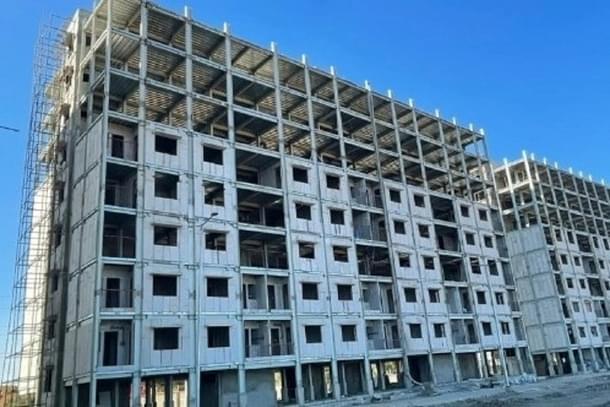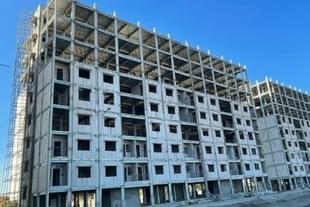Infrastructure
How Modi Government Is Using New Construction Technology To Build PM Awas Houses Faster And Cheaper
Ankit Saxena
Jan 18, 2023, 01:38 PM | Updated 01:35 PM IST
Save & read from anywhere!
Bookmark stories for easy access on any device or the Swarajya app.


The proposed light house project (LHP) in Indore is nearing completion for handing over to the beneficiaries.
The project includes 1,024 affordable housing units.
The LHP Indore is equipped with the necessary infrastructure for comfortable living standards.
It includes piped water supply, electrification, provision for firefighting, passenger lifts, paved landscape and social infrastructure.
There are provisions for efficient drainage with sewerage pipeline, rain water harvesting, sewage treatment plant and solid waste management.
The multi-storeyed project demonstrates new construction techniques and materials, replacing the conventional brick and mortar construction practices.
It has used prefabricated sandwich panel system made out of cement or calcium silicate boards which act as wall panels. These panels are used along with pre-engineered steel structural system.
The materials ensure better thermal insulation, acoustics and energy efficiency. The panels are made in India and have been standardised to correspond to the building requirements.
As per initial estimations, the total cost of the project will be around Rs 125 crore. Each housing unit will be built at a cost of Rs 12.5 lakh.
On completion, these homes will be delivered to the beneficiaries as part of the Pradhan Mantri Awas Yojana-Urban (PMAY-U).
What Are The Light House Projects?
This housing project is part of the series of LHPs launched by Prime Minister Narendra Modi on 1 January 2021. These projects have come forward through the Global Housing Technology Challenge-India (GHTC-India).
It aims to identify and bring forward a series of innovative construction technologies from across the globe for Indian housing sector that are sustainable, eco-friendly and disaster-resilient.
The methods are to be cost- and time-effective while ensuring improved quality of construction catering to all functional needs and geographical conditions.
The selected technologies were considered for actual ground implementation with six different LHPs, of about 1,000 houses each. The other five projects are ongoing in the cities of Rajkot, Chennai, Ranchi, Agartala and Lucknow.
Each project is being executed with distinct technology for construction and material usage. The distinctions are also based on the diverse geological conditions and requirements for different locations in India.
Of the six projects, the LHG Chennai has been completed on time using precast concrete systems that were assembled on site. The Rajkot LHG has been executed using monolithic concrete construction.
It is a system which facilitates the casting systems of walls, floor and roof in a single operation.
The housing projects in Ranchi, Jharkhand and Agartala are also under execution.
Transforming Construction Systems To Fast Track Projects
The projects provide construction of ready-to-live houses along with the supporting infrastructure in a sustainable manner. The process has enabled alternate building technologies to achieve low cost and timely delivery of housing resources.
The LHP in Chennai was successfully completed in 12 months and inaugurated on 26 May 2022. The project scales to 12 towers of five floors each, and provided one BHK homes to 1,152 families at affordable costs.
The cost of each unit through these programmes comes to Rs 12.59 lakh. The Indian Government would be providing a subsidy of Rs 7.83 lakh and the remaining amount would be paid by the beneficiaries.
These construction techniques have been designated to overcome the challenges of the conventional building methods.
The houses built conventionally faces issues of supply, quality, uniformity, wastage and many environmental concerns. Such factors stand unfavourable for achieving the mission of ‘Housing for All’, considering the importance of timeliness, accessibility and affordability.
The alternative approaches serve in generating affordable housing systems and fast-tracking construction. The faster implementation is possible with mending the ways of execution.
Being dry systems, it overcomes the long drying time. The simultaneous precasting and assembling process on site reduces time and wastage. The mechanised methods support easier installations and uniform quality outputs.
These technologies will bring the paradigm shift required in the construction systems — with a focus on practices which are cost-efficient, environmentally responsible and sustainable.
The success of these technologies is progressing towards achieving maximised housing resources under the objectives of Pradhan Mantri Awas Yojana – Urban (PMAY-U).





